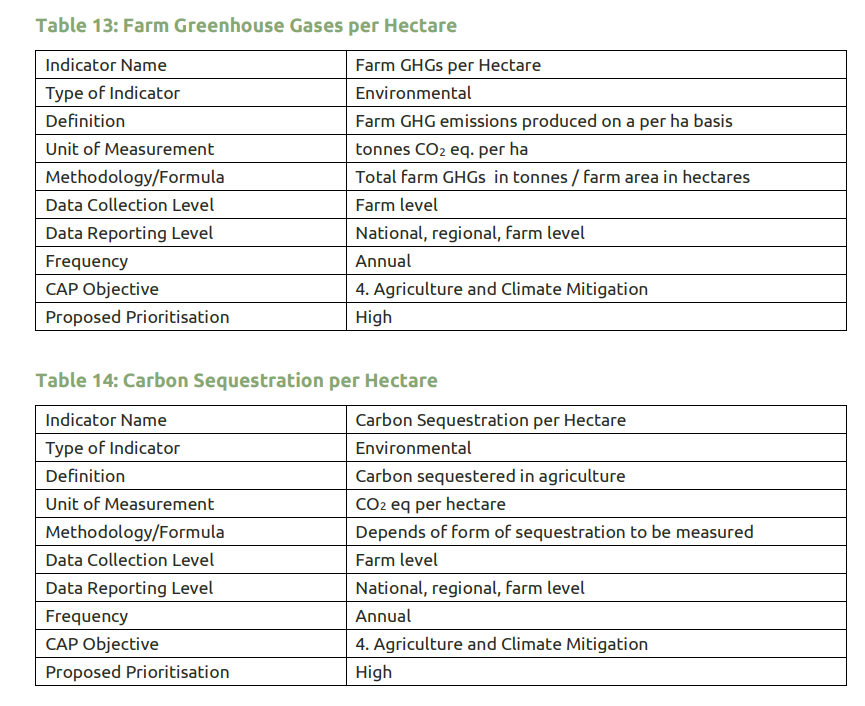Beyond economic sustainability: new environmental data for the Monitoring and Evaluation of the CAP


A broader range of data on EU farming practices is one of the prerequisites to better address the sustainability challenges of the EU’s agricultural sector. The new Farm Sustainability Data Network is a step in that direction, but it is not clear yet which new indicators it will prioritize. Can the MEF4CAP list of indicators provide some inspiration?
Broadened the Focus Beyond Economic Performance
While data on economic aspects of EU agriculture have been collected on a yearly basis through the Farm Accountancy Data Network (FADN) for several decades, data on the sector’s environmental and social performance is mostly lacking. As part of the solution to address this data gap, the EC recently made a proposal for the conversion of the FADN into a Farm Sustainability Data Network (FSDN).
The biggest change would be the inclusion of environmental and social variables in the yearly survey, in addition to the economic variables that are currently collected. The Commission proposes the gradual inclusion of these new variables, starting in 2025 with anything from 5 to 25 new indicators. However, the proposal remains silent on the specific indicators, as these will be set through secondary legislation.
An additional innovation which holds interesting potential for improved inter-operability and a reduced administrative burden associated with data provision, is the proposed introduction of a unique farm ID. This would help cross-linking existing databases such as the Integrated Administration and Control System (IACS) of the CAP or national statistical sources with the FSDN data.
The MEF4CAP Wish List of Indicators
Reflecting the concern that new data and associated metrics are required to measure the CAP’s performance across a range of economic, social and environmental goals, the MEF4CAP project set about developing an inventory of data needs. This exercise sought to identify key indicators for the nine specific objectives of the CAP, with a particular focus on indicators for which there is currently no data, either at EU or national level. On the basis of the identified priority data needs, a long wish list of close to 90 potential indicators was first identified, along with a shorter more refined wish list of 41 potential indicators was developed. These indicators were aligned to the new CAP objectives.
The indicator list prioritises environmental concerns and to a lesser extent social concerns, reflecting the fact that numerous economic indicators relating to agriculture already exist. For example, the environmental indicators considered being of high priority include carbon sequestration, farm GHG emissions, pesticides, crop rotation, soil cover and landscape features indicators – to name a few.
The project has since explored potential data sources, with a particular focus on the role of new technologies in providing data which up to now were unavailable. The FADN was identified as an interesting data source, but only for 2 of the 41 priority indicators: off-farm income and income volatility. The expansion of the FADN to FSDN could make this an even more relevant data source. The image below shows an excerpt from the wish list of indicators and how they are categorised and described.

MEF4CAP Portal
The recently developed MEF4CAP Portal represents a central point of information on monitoring and evaluation needs, identified sustainability indicators and sources of data (ranging from the common monitoring and evaluation framework to new ICT developments). Integrated into the project’s website, the MEF4CAP portal can be used as a wiki / database for indicator types and details on how data for indicators can be captured. Towards the end of the project, success stories and lessons learnt will be added to this portal, while users will continue to be able to access information on specific policy needs and ICT developments.

The overall objective of the portal is to support knowledge transfer, but also to help various stakeholders in the selection and development of indicators. In addition, it can be used to further harmonise Member States’ monitoring and evaluation frameworks (including indicators, the underpinning data flows and methods of measurement) in a CAP that is more decentralised and where individual MS have a requirement for additional country or region-specific indicators.